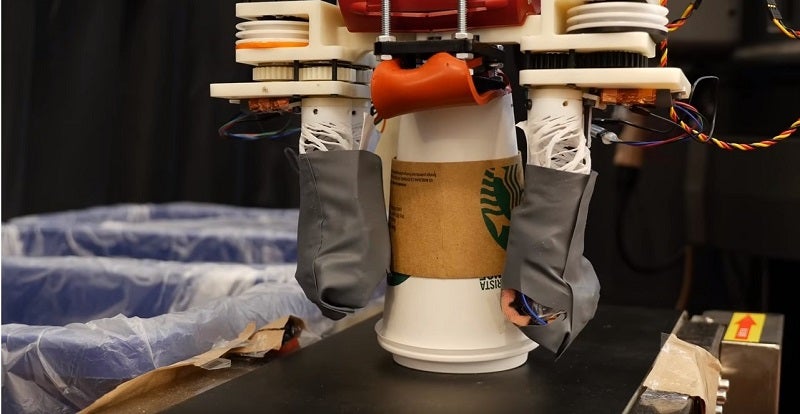
Researchers at MIT’s Computer Science & Artificial Intelligence Lab (CSAIL) and Yale University have created recycling robots called RoCycle that can sort different materials, such as paper and plastics, using touch sensors.
The recycling robots use soft robotics alongside the sensors to identify the materials by touch instead of the traditional computerised vision used by recycling facilities and AI-sorting rubbish bins.
An MIT CSAIL spokesperson told CNET: “Compatible with any robotic arm, RoCycle was found to be 85% accurate at detecting materials when stationary, and 63% accurate on an actual simulated conveyor belt.”
MIT professor Daniela Rus told VentureBeat: “Computer vision alone will not be able to solve the problem of giving machines human-like perception, so being able to use tactile input is of vital importance. Relying on a purely optical object-sorting process introduces inaccuracy because material type is not a visual property, but a tactile one.”
The researchers are currently working to blend RoCycle’s touch sensors with camera video input, to improve its sorting accuracy.
The global robotics market is predicted to triple to $275bn by 2025, due to cheaper and smarter machines.
GlobalData Technology Thematic Research chief analyst Gary Barnett said: “Growth is being driven by robots becoming progressively cheaper, smarter, more flexible and easier to train. That, in turn, is making it easier for robots to infiltrate new industries and drive new use cases.
“Robot proliferation is only just beginning. Say’s law – which states that supply creates its own demand – is revving up ever faster. Industrial robot densities across the world will grow as factory automation accelerates, especially in China.
“Meanwhile, improvements in technology and the redefinition of robots as connected artificial intelligence agents will increase the proliferation of robots in the factory, in the office, on the roads, in the skies, and at home.”



